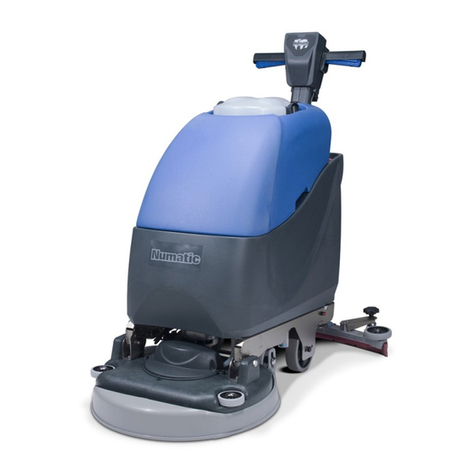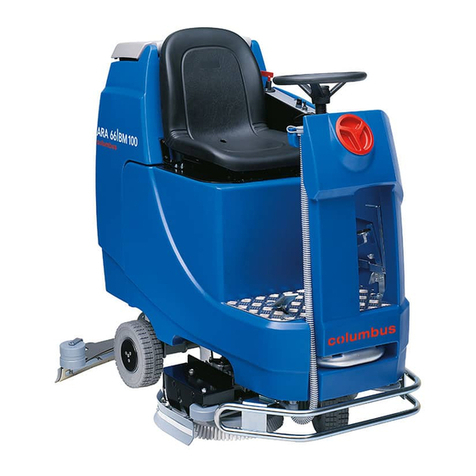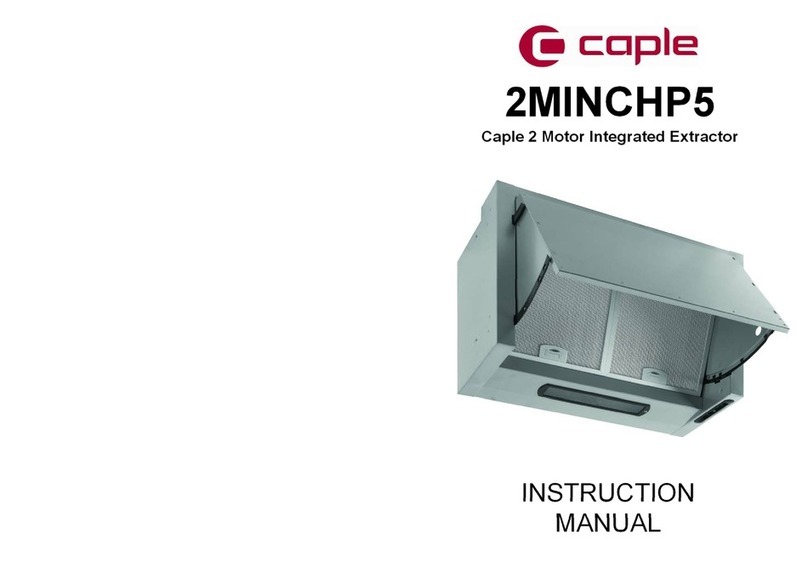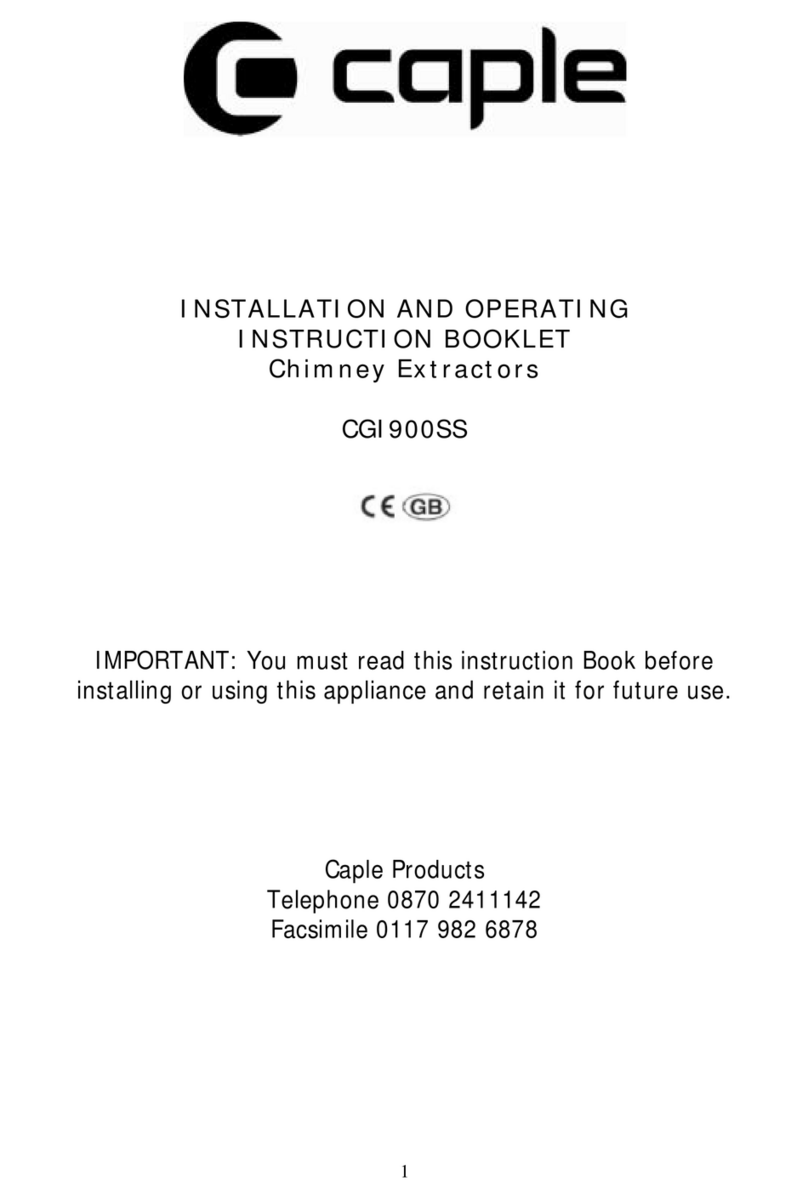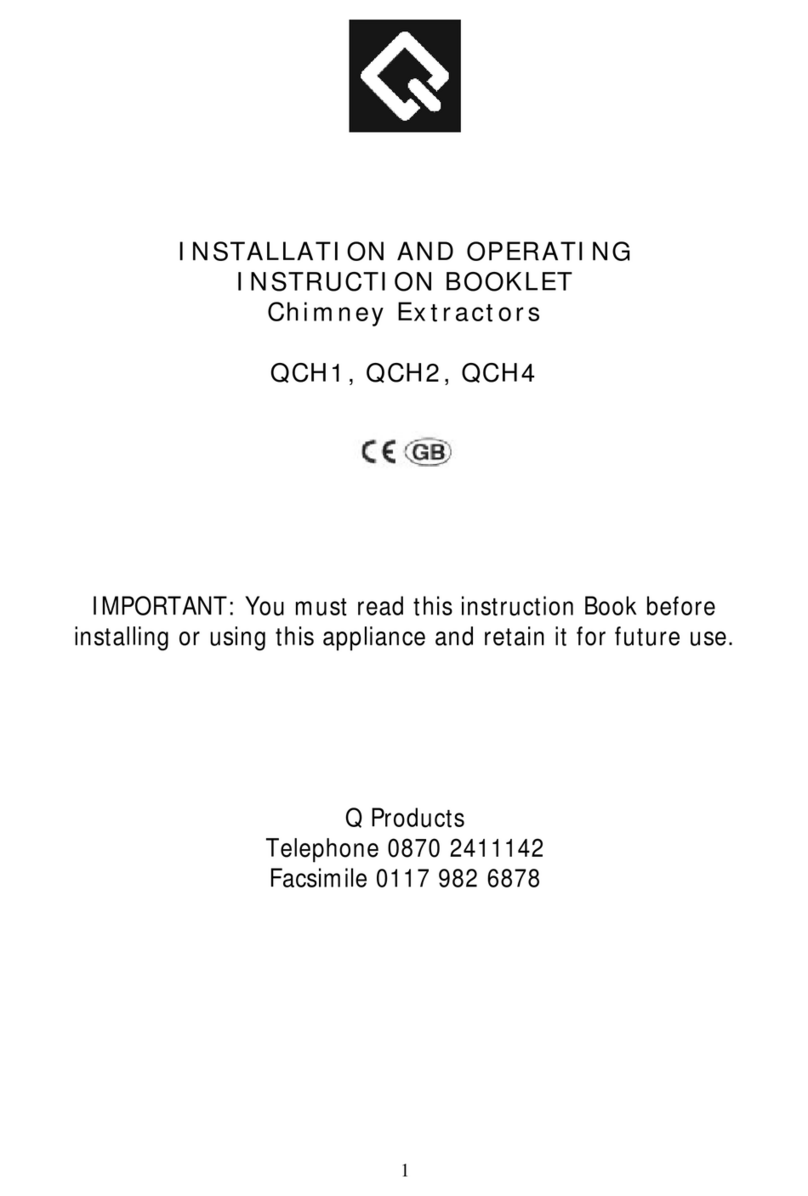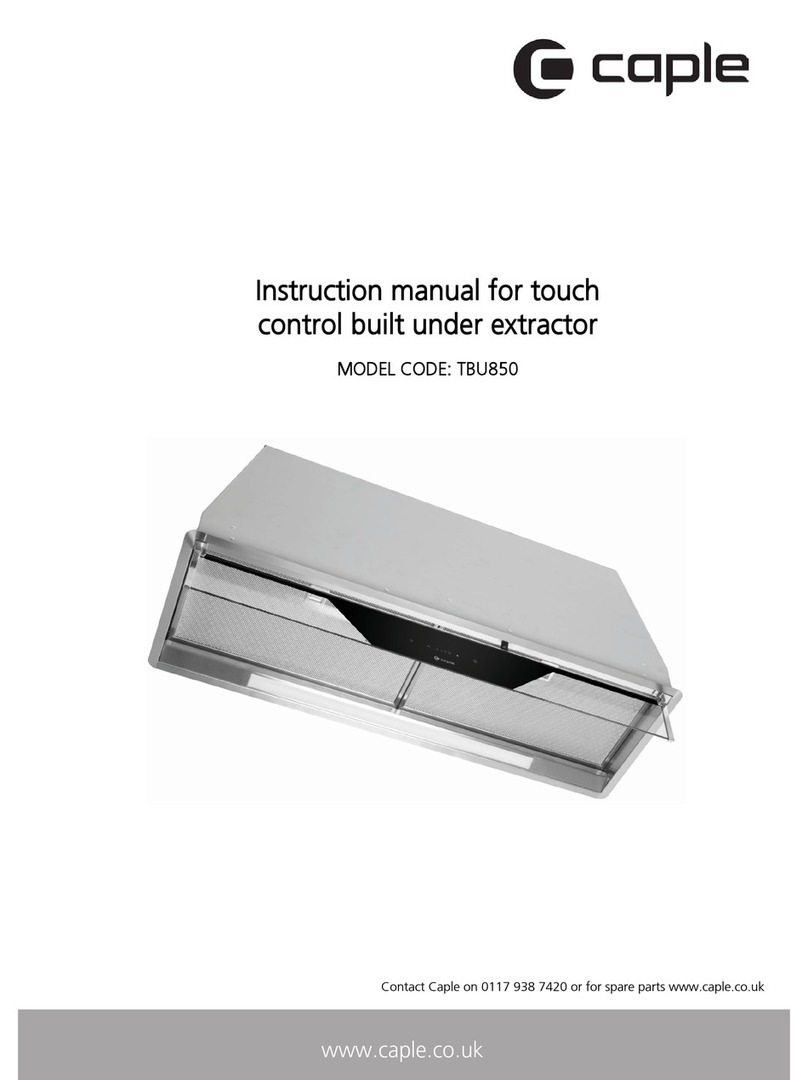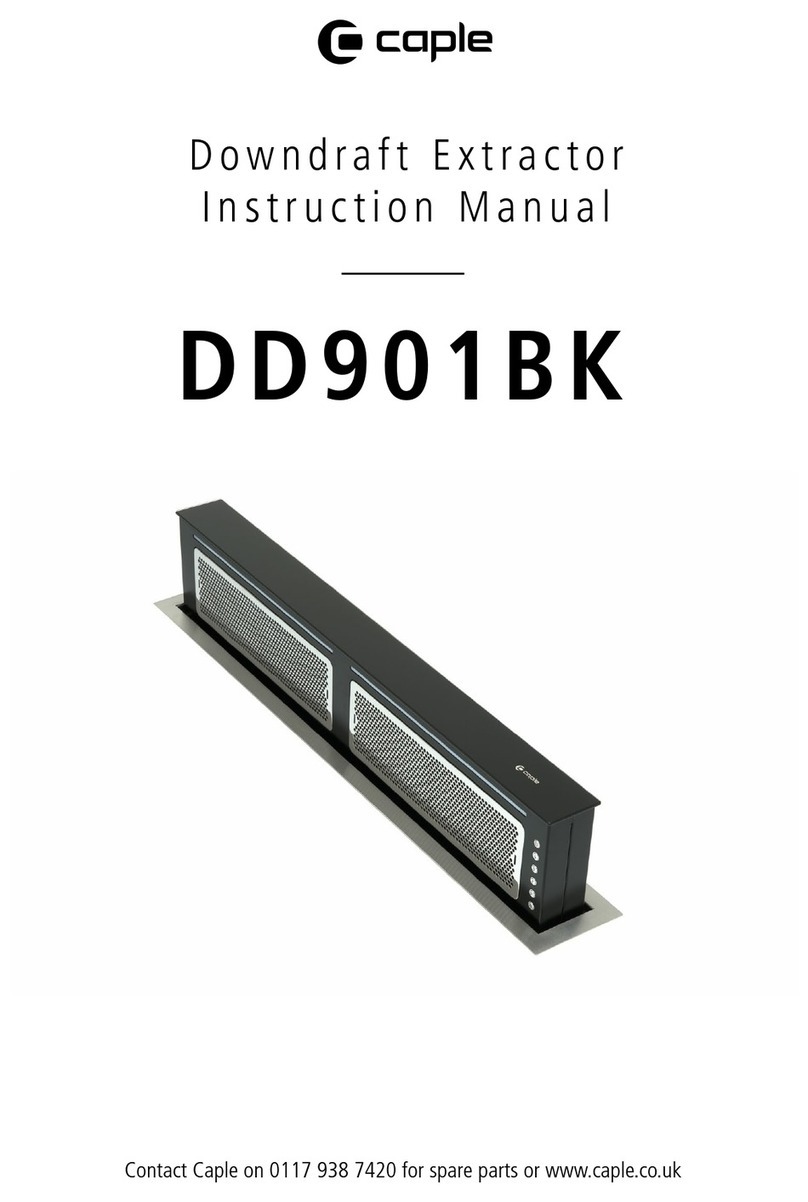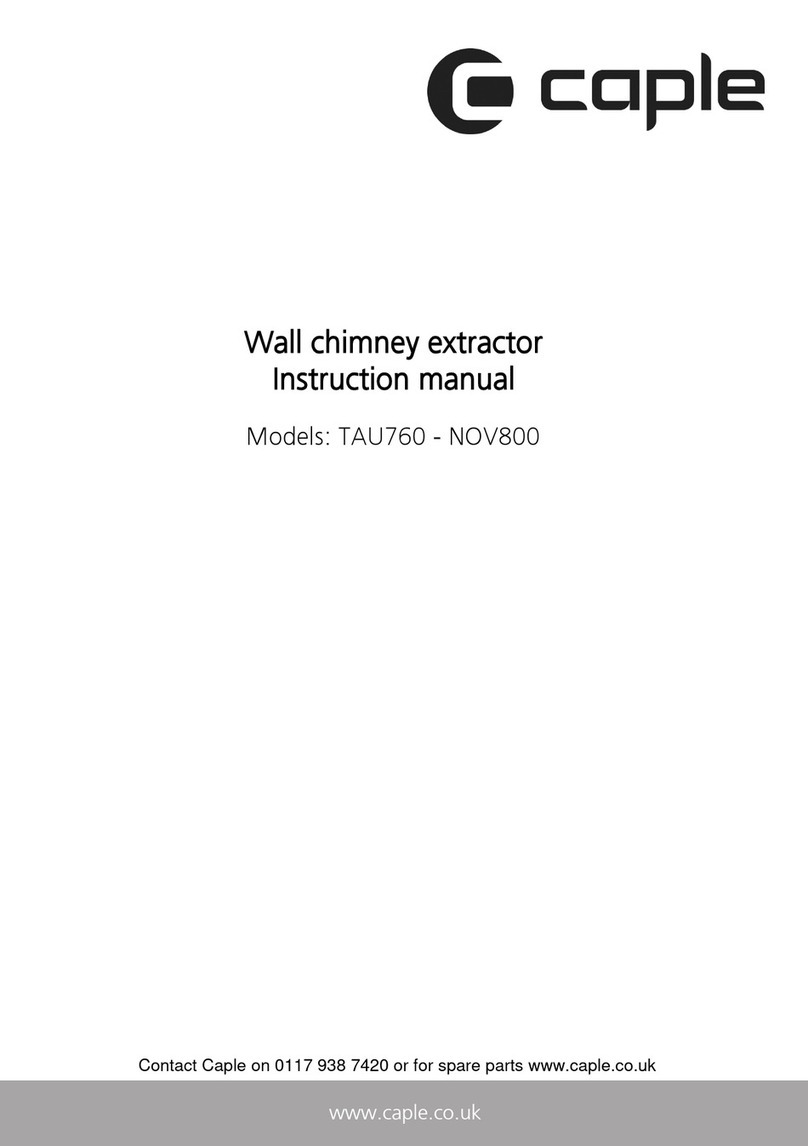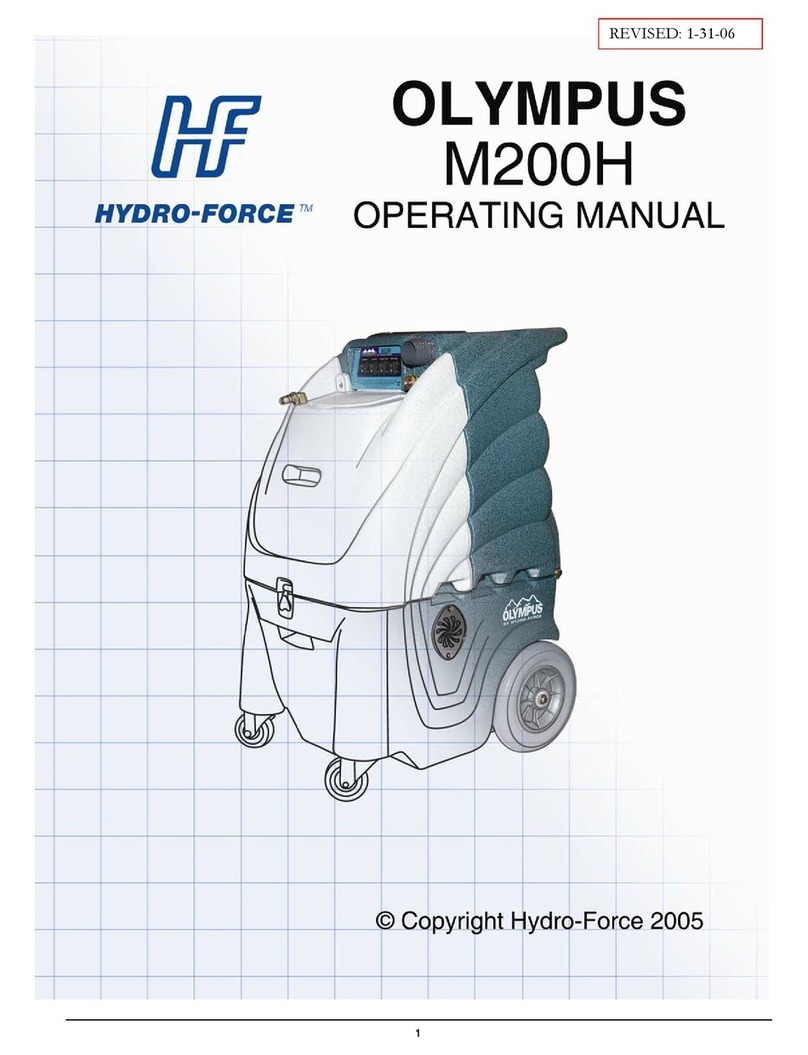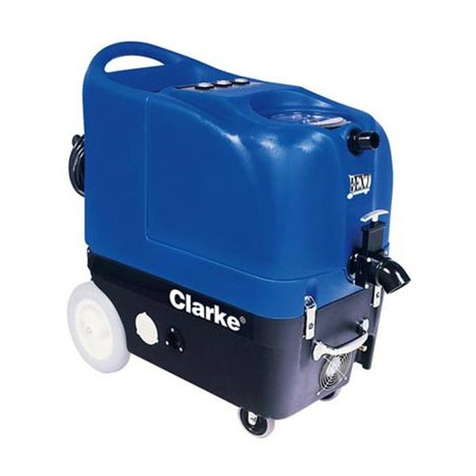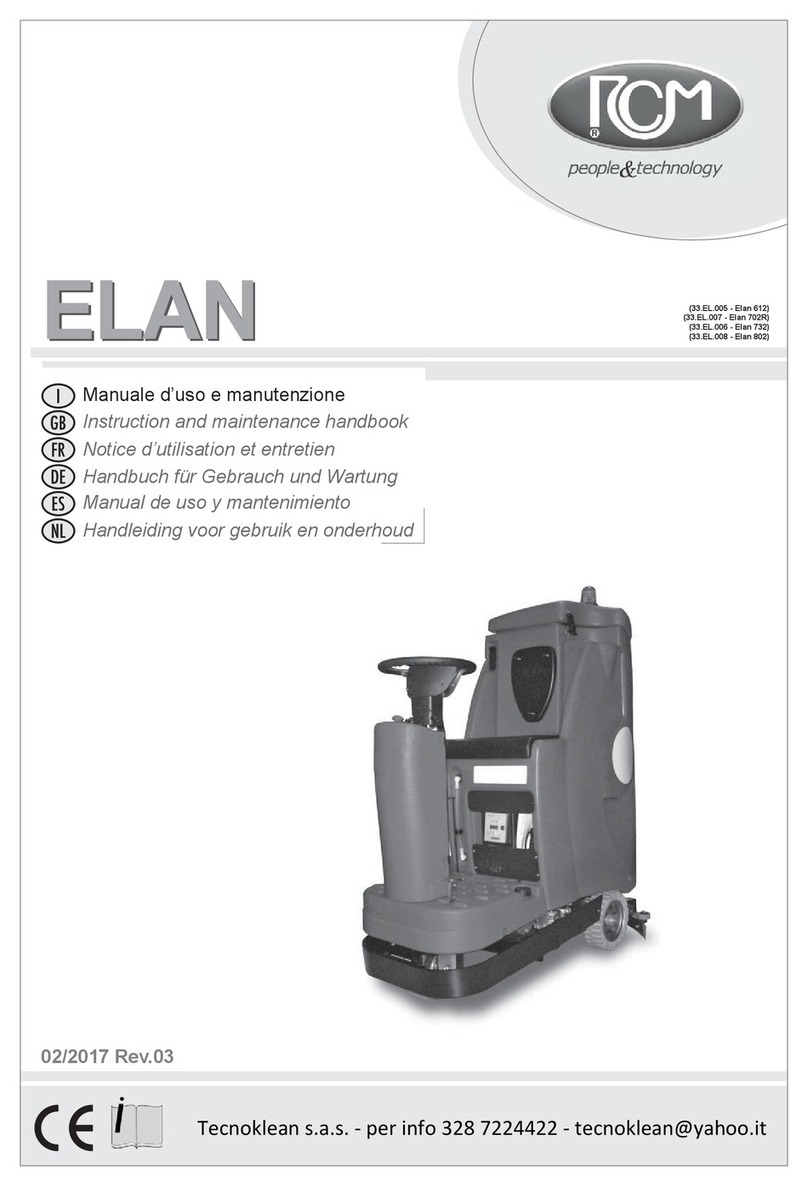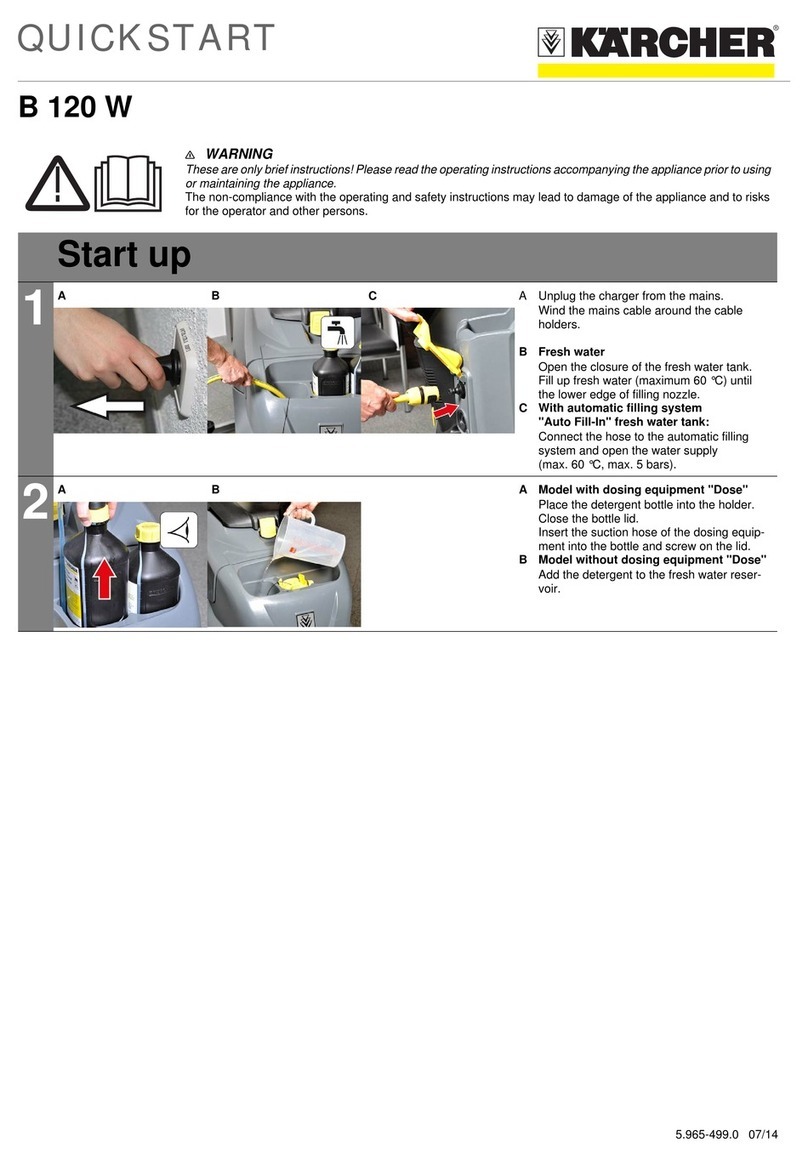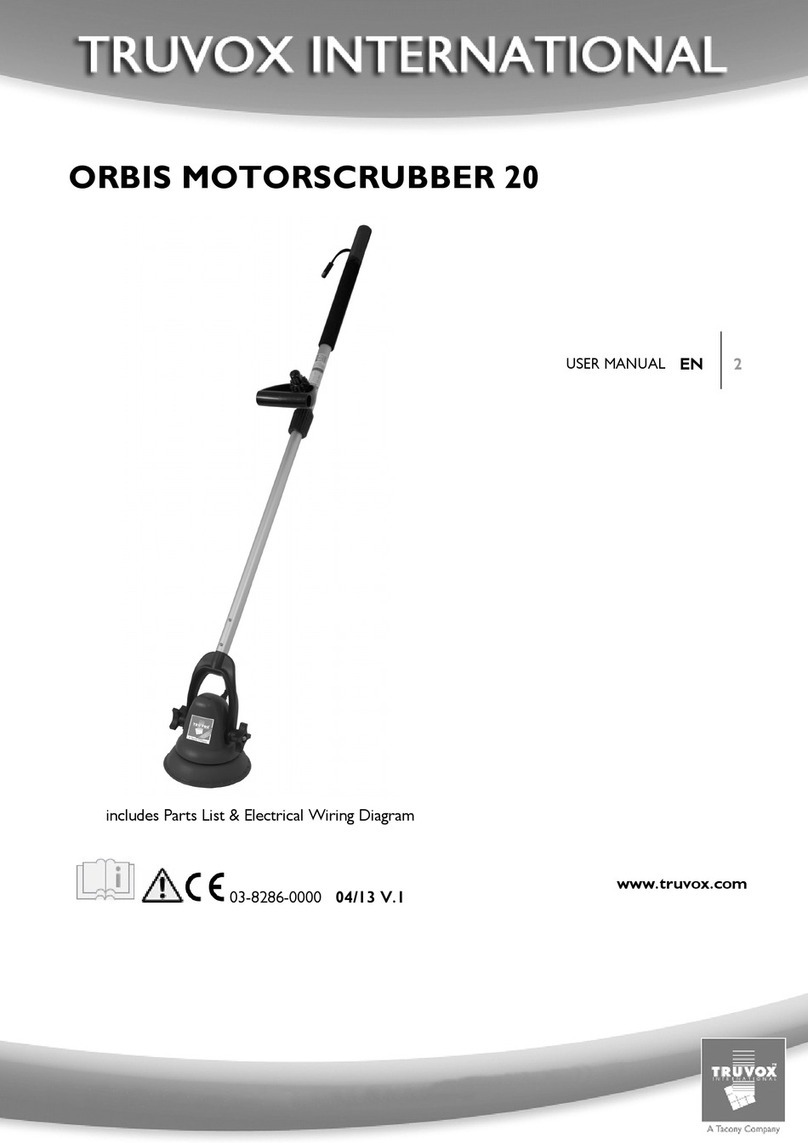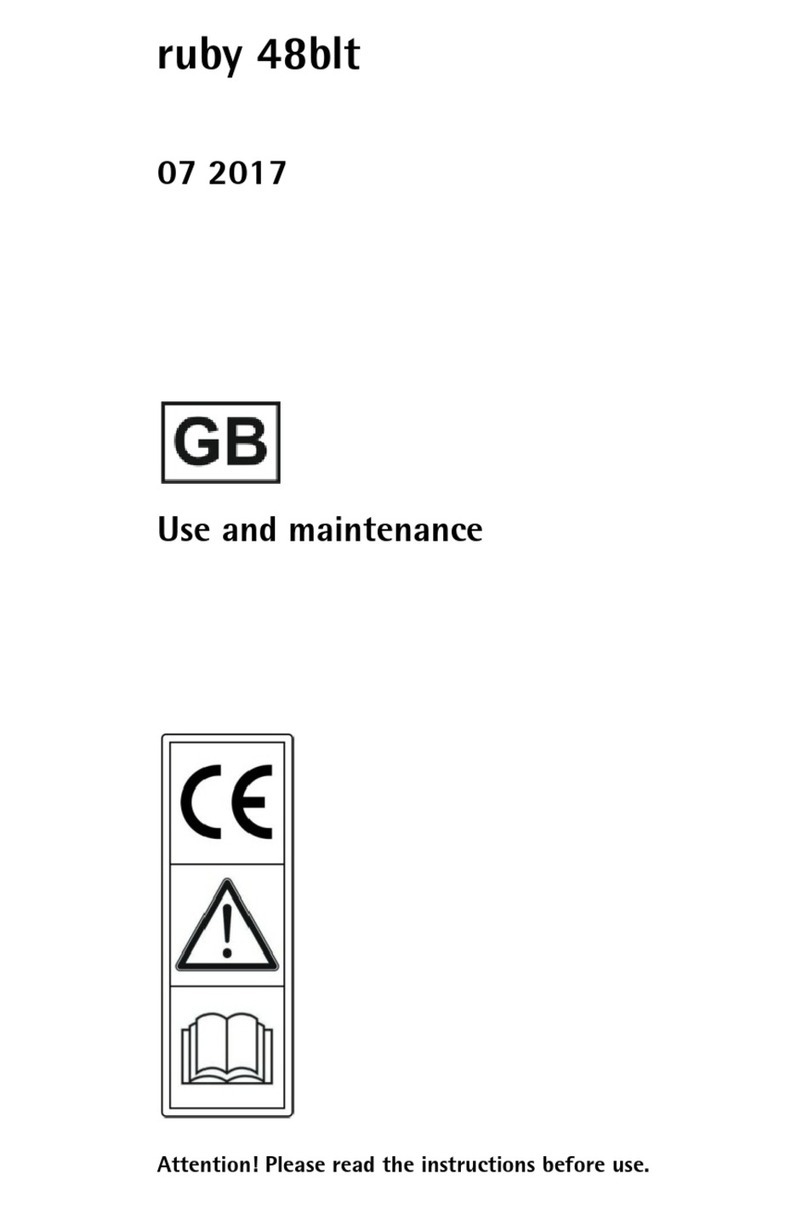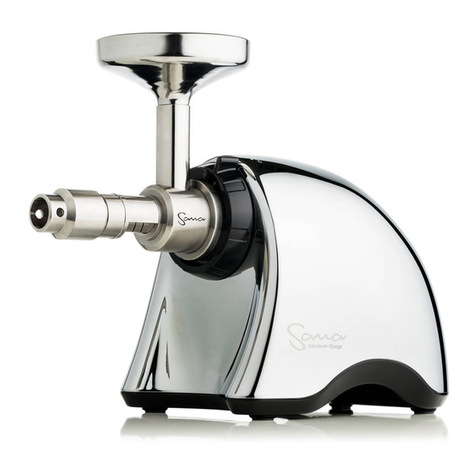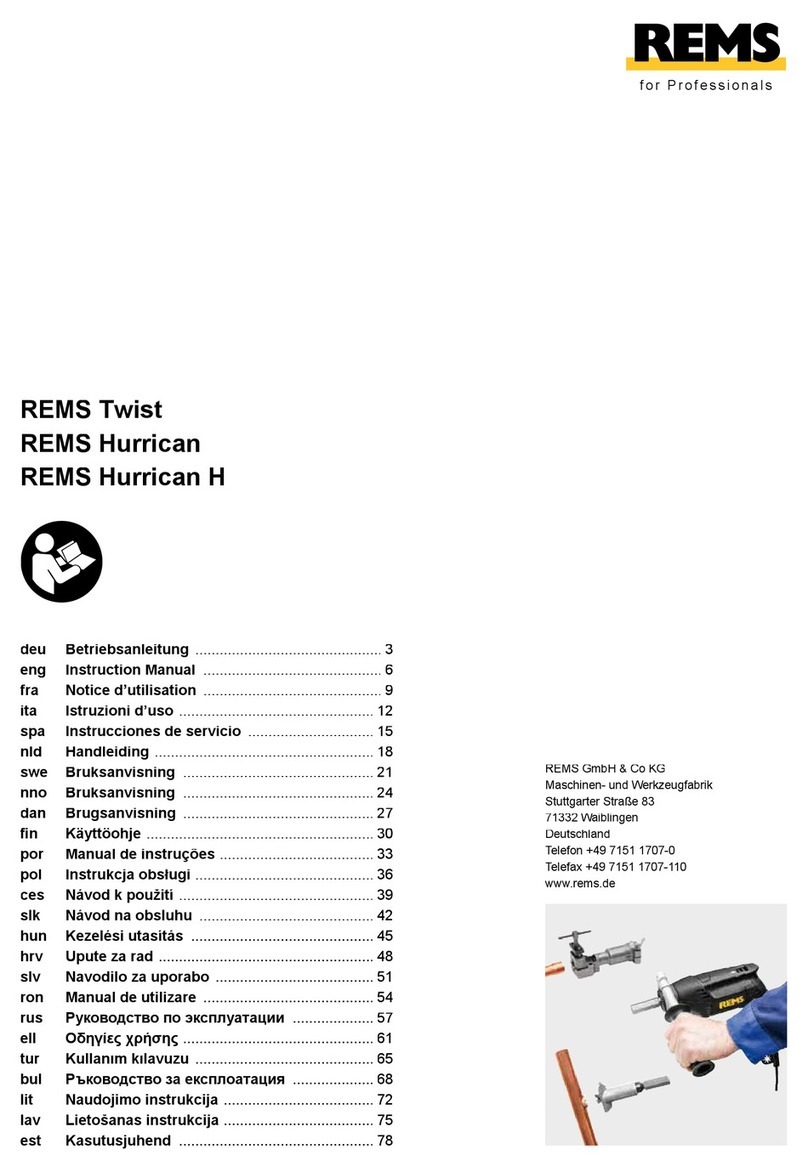
Instruction manual PI403
Please keep this instruction manual for future reference
9
with the cooking top’s minimum height. Tighten the two structures securely with
the screws provided (Fig. 7.3-B). Insert the two extension tubes (Fig. 7.4 & Fig. 7.5)
from above the two structures by making them come down to the appropriate
hood seat.
Lift the hood together with the structure and the extension tubes to make the four
springs (Fig. 7.6-E) hook to the slots (Fig. 7.3-C). Then tighten the two elements
securely (Fig. 6.1 & Fig. 6.2) with the safety screws (Fig. 6.2-A) and connect the
hood tube to the drain hole. Make the electrical connections. (For versions with
display only) Lift the lower pipe until the cable strap coming out of the unit is
uncovered and connect it to the display cable strap. Put down the lower pipe while
paying attention it is being properly introduced into the hood. Lift the upper tube
(Fig. 7.5) up to the ceiling and insert the two self-tapping screws (Fig. 7.5-D).
Recirculation mode
Place the upper plate (Fig.5.1) on the ceiling. Drill 4 holes, 8 mm each, just next to
the slots. Insert the plastic dowels into the holes (Fig.5.1- A). Fix the baffle (Fig. 5.2)
to the upper bracket (Fig.5.3) with the four self tapping screws provided (Fig. 5.3
A). Screw up the plate together with the baffle (Fig.5.1 B). Then fasten the lower
structure (Fig. 7.2) on the hood by making its holes and the metric thread screws
welded on the fan support coincide (Fig. 7.1). Insert the washers and nuts provided
(Fig. 7.2-A) and screw with an appropriate tool.
Connect the drainpipe to the power unit nozzle and fix securely with a hose clamp.
Insert the upper structure (Fig. 7.3) into the lowest one and adjust its height as
required by matching it with the cooking top’s minimum height. Tighten the two
structures securely with the screws provided (Fig. 7.3-B). Insert the two extension
tubes (Fig. 7.4 & Fig. 7.5) from above the two structures by making them come
down to the appropriate hood seat. Lift the hood together with the structure and
the extension tubes to make the four springs (Fig. 7.6-E) hook to the slots (Fig.
7.3-C). Then tighten the two elements securely (Fig. 6.1 & Fig. 6.2) with the safety
screws (Fig. 6.2-A) and connect the hood tube to the baffle’s lower hole.
Make the electrical connections. (For versions with display only) Lift the lower
pipe until the cable strap coming out of the unit is uncovered and connect it to
the display cable strap. Put down the lower pipe while paying attention it is being
properly introduced into the hood. Lift the upper tube (Fig. 7.5) up to the ceiling
and insert the two self-tapping screws (Fig. 7.5-D).
